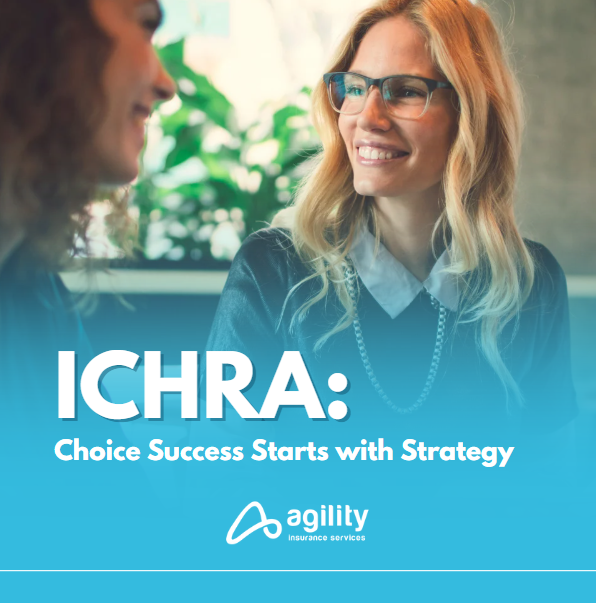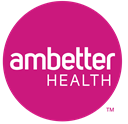ICHRA Success Starts With Strategy
A Sales Approach for Selling Choice Arrangements as a Group Benefit
Introduction: A Strategy Guide for ACA and MA Brokers Entering ICHRA
If you’re coming from ACA or Medicare Advantage sales, you’re used to fast-paced, product-focused transactions. But when it comes to ICHRA (Individual Coverage Health Reimbursement Arrangements) — also referred to as “Choice Arrangements” — that approach falls short.
ICHRA isn’t a product. It’s a benefit structure.
And it’s one that positions you as a strategic advisor, not just a quote machine.
This guide outlines a 7-step sales strategy designed to help experienced brokers pivot into the ICHRA space with confidence — and with structure.
Defined Contribution vs. Defined Benefit — The Real Shift
Before you sell ICHRA, you have to understand how it works financially — and how it fundamentally differs from traditional group insurance.
| Model Type | Who Picks the Plan? | Who Controls Costs? | Risk Profile | Flexibility |
| Defined Benefit (Traditional Group) | Employer | Employer (via premiums) | High employer risk | Low flexibility |
| Defined Contribution (ICHRA) | Employee | Employer (via budget) | Lower employer risk | High flexibility |
With ICHRA, the employer no longer chooses the plan — they choose the budget. Each employee then selects the plan that best fits their needs on the individual market.
Why Employers Like It:
- Predictable monthly costs
- Less exposure to renewal hikes
- More personalized options for employees
- Reduced HR and compliance burden (when paired with a vendor)
Once you understand this shift, you’re no longer selling coverage — you’re selling control, choice, and clarity.
Now let’s dive into the strategy.
Step 1: Start With the Census
Because ICHRA is a group benefit, the first step is understanding the group.
How to Ask:
“All I need to get started is your census and if you have benefits today, a copy of your most recent bill. The census only needs to include age, ZIP, and dependents. No names or sensitive info.”
What Value It Creates:
- Enables accurate group modeling
- Builds trust with personalized, data-driven options
- Helps shape employer contribution strategy
Pro Tip: Position the census as the key to clarity. It’s how you unlock real answers.
Step 2: Get the Quote
With the census in hand, it’s time to get real numbers on the table.
What to Do:
- Submit the census (and bill if you have) to your preferred ICHRA platform
- Most platforms will return a full comparison report showing plan options, subsidy modeling, and projected employee premiums.
- Use two platforms if you want to compare fee structures or tech experiences.
- Send the same census to your General Agency or a group carrier rep
- This creates a traditional group quote to benchmark against your ICHRA model.
- It gives the employer a full spectrum: defined contribution vs. defined benefit.
- Compare the TOTAL COST OF BENEFITS through the defined contribution model versus the defined benefit model
Step 3: Show the Comparison
Your job isn’t to quote plans — it’s to compare benefit structures.
What to Compare:
| Group Insurance | ICHRA |
| Employer chooses plan | Employer sets budget |
| Limited options | Employees choose their own |
| Complex renewals | Admin managed by vendor |
| Rigid structure | Flexibility & portability |
What You’re Driving Toward:
- Can the employer control costs more effectively?
- Can employees get equal or better options?
- Is there more flexibility with less admin?
“Let’s evaluate whether you can save money, offer more choice, or both.”
Step 4: Quote Ancillary & Supplemental Products
Group benefits feel complete when they include more than just health.
What to Include:
- Dental, Vision & hearing
- Life Insurance
- Hospital Indemnity, Accident, Critical Illness
Why It Matters:
- Enhances the value of the total package
- Drives adoption and retention
- Reinforces employer value prop
Don’t let the group benefit feel like a downgrade — bundle with intent.
Step 5: Outline the Pros & Cons
Group decision-makers need both sides. Give it to them straight.
Pros:
- Budget flexibility
- Scalable with growth
- Nationwide access
Cons:
- New learning curve for employees
- Multiple plan experiences
- Compliance needs oversight
Transparency builds trust and gets you invited back.
Step 6: Leverage the Vendor
Just like a traditional group plan has a TPA or broker partner, ICHRA has a platform vendor. Lean on them.
What the Vendor Brings:
- Tech
- Compliance
- Reimbursements
- Reporting
What You Bring:
- Strategy
- Support
- The Relationship
You’re the architect — the vendor is your construction crew.
Step 7: Guide the Process & Monitor the Outcome
Group benefits involve stakeholders — HR, leadership, sometimes finance. Be their guide.
What This Looks Like:
- Onboarding support
- Open enrollment presence
- Communication coaching
Stay Involved Post-Launch:
Monitor:
- Reimbursement reports: Are employees getting paid on time?
- Participation metrics: Are employees engaged with the benefit?
- Compliance documentation: Are legal obligations being met?
- Billing accuracy: Are invoices clean and predictable?
- Milestone alerts: Are renewals and deadlines on track?
ICHRA is a group benefit. And just like traditional group, it needs a broker who doesn’t vanish after the sale.
Final Takeaway: ICHRA Is a Strategy, Not a Sale
If you treat ICHRA like a plan, you’ll miss the value.
If you treat it like what it truly is — a group benefit built on a defined contribution model — you’ll help employers cut costs, boost satisfaction, and retain flexibility.
Be the strategist. Be the guide. Be the reason your clients stay with you long term.



